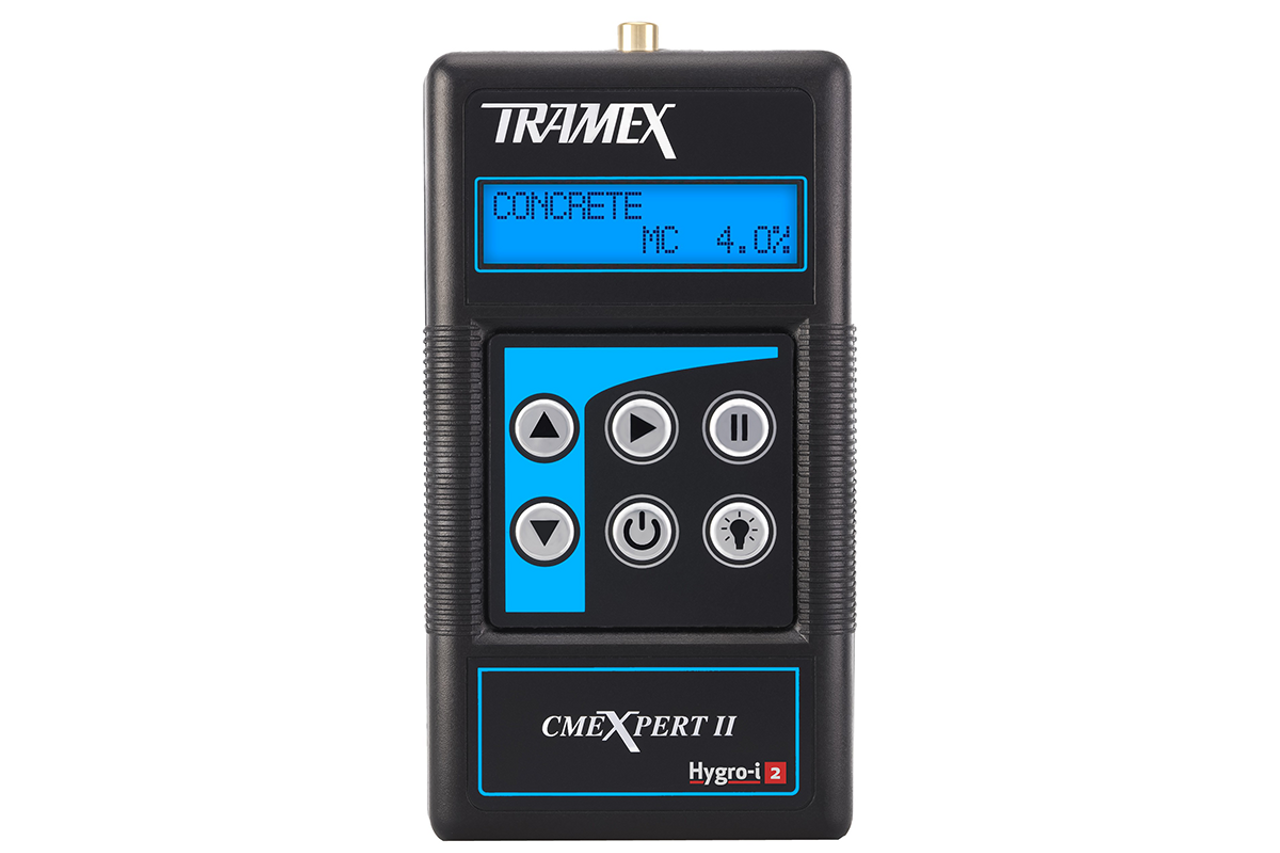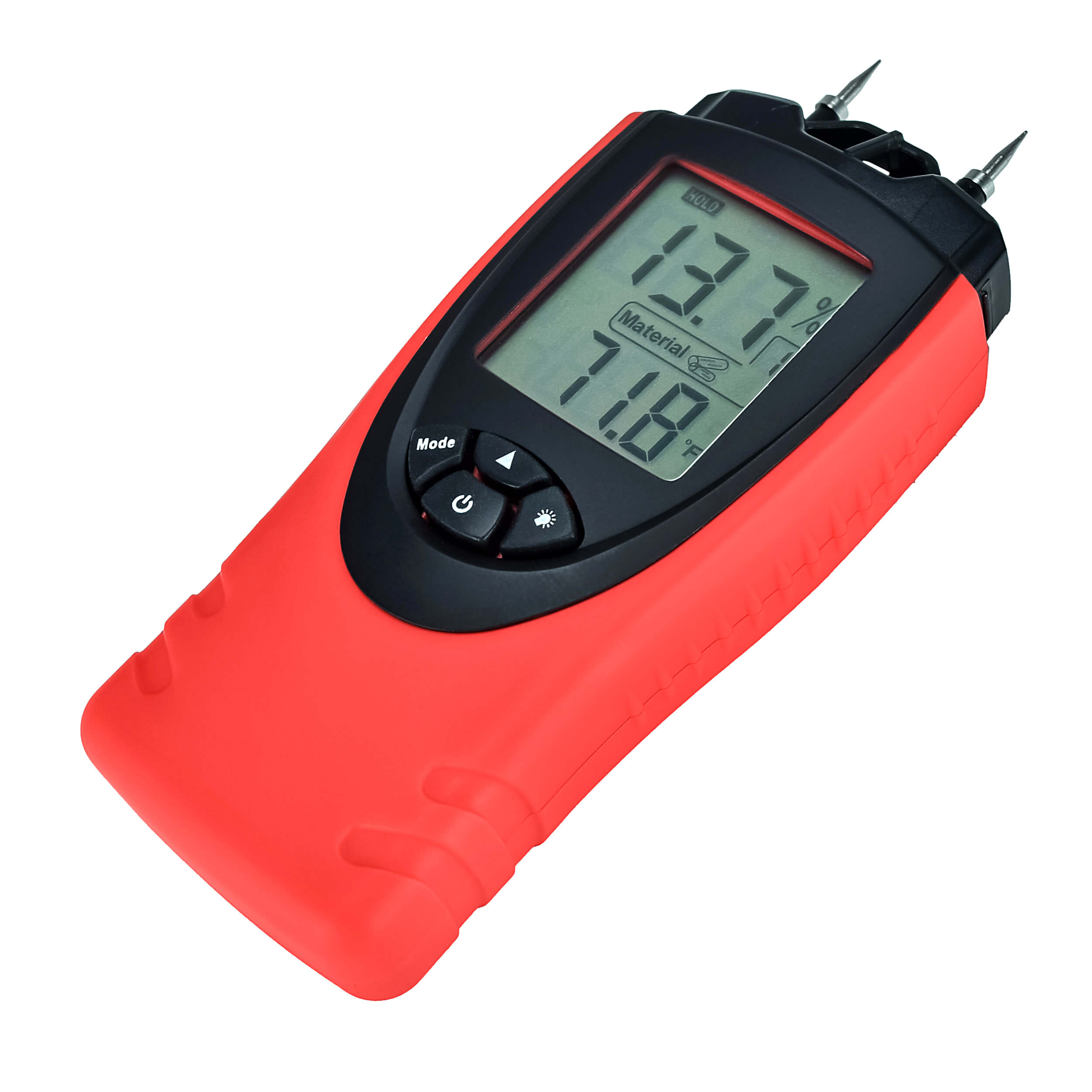Explore the World of Wetness Meters: Whatever You Need to Know
In the realm of moisture meters lies a world of precision and practicality that often goes unnoticed. Understanding how moisture meters run, the various types available, and their diverse usages can drop light on their importance in ensuring quality and efficiency.
Just How Wetness Meters Work
Dampness meters run by determining the electrical conductivity or capacitance of materials to establish the wetness content existing - Moisture Meter. These meters are invaluable tools throughout numerous markets, including agriculture, woodworking, and construction. By utilizing different approaches such as pinless or pin-type innovation, moisture meters offer precise analyses that aid experts make informed choices
Pin-type dampness meters work by putting the sharp pins right into the product being checked. The electrical conductivity between the pins is then measured, with greater moisture degrees causing raised conductivity. On the other hand, pinless moisture meters utilize electro-magnetic signals to check a larger area without triggering any type of damages to the product's surface area. These meters are perfect for swiftly analyzing moisture levels in large areas or completed items.
Regardless of the method used, moisture meters play a critical duty in avoiding issues such as mold growth, architectural damages, or item issues created by excess dampness. Recognizing just how these meters job is essential for ensuring the quality and integrity of products in numerous applications.
Sorts Of Dampness Meters
Offered the important function moisture meters play in numerous markets, it is essential to recognize the various types readily available to experts for accurately analyzing wetness levels. There are largely 2 main kinds of wetness meters: pinless and pin-type wetness meters.
Pin-type moisture meters use two pins that are put into the product being checked to measure the electric resistance between them. This technique is commonly made use of for wood, drywall, and various other building products. Pin-type meters offer exact readings at certain midsts, making them suitable for recognizing dampness gradients.
On the other hand, pinless dampness meters use electromagnetic sensor plates to scan a bigger area of the material without triggering any type of damages. This type is suitable for promptly scanning large areas and is generally made use of for flooring, walls, and ceilings. Pinless meters are convenient for taking readings on finished surfaces without leaving any noticeable marks.
Both sorts of dampness meters have their benefits and are picked based on the particular needs of the task available. Comprehending the distinctions in between these kinds is essential for specialists to make accurate moisture assessments.
Applications Across Industries
With varied performances, wetness meters locate widespread application across different markets, aiding experts in making sure optimum problems for products and structures. In the farming market, wetness meters are very useful for identifying the dampness web content in grains, seeds, and hay, guaranteeing quality assurance and avoiding mold and mildew growth. Construction specialists count on wetness meters to examine the dampness levels in building products like concrete, drywall, and timber, which is important for keeping click over here now architectural stability and preventing issues like rot or mold and mildew. The flooring market uses dampness meters to measure the moisture content in subfloors before installing numerous flooring treatments, protecting against expensive damages due to excess moisture. In addition, in the food industry, wetness meters are utilized to check and control moisture degrees in products such as grains, nuts, and dried fruits to maintain quality and high quality. Additionally, moisture meters play a crucial role in the remediation and damage evaluation industry by aiding professionals recognize and address water damage in structures immediately. Throughout these diverse industries, moisture meters are vital tools for making sure the top quality, safety and security, and longevity of numerous products and products.
Tips for Utilizing Dampness Meters
Make use of the wetness meter's calibration setups to guarantee precise analyses when measuring the wetness material in numerous materials. Additionally, make sure the meter is established to the right wetness variety for the material you are gauging to obtain the most precise results.

When making use of a pin-type dampness meter, put the pins to the proper depth recommended for the material being evaluated. This ensures that the wetness analyses are extracted from the proper depth within the material, offering an extra precise depiction of its dampness content. For pinless dampness meters, bear in mind to maintain correct call with the product's surface area to get trustworthy analyses.

On a regular basis inspect and replace the batteries in your wetness meter to avoid imprecise analyses due to helpful site reduced power. When not in usage to lengthen its lifespan and keep its precision, Shop the meter in a safe and dry place. By complying with these ideas, you can maximize the efficiency of your dampness meter and get accurate wetness content dimensions throughout various materials.

Upkeep and Calibration
To make sure the accuracy of wetness web content dimensions, normal maintenance and calibration of the dampness meter are essential steps in its proper performance. Upkeep entails keeping the dampness meter clean and cost-free from debris that could affect its readings. It is essential to adhere to the producer's standards for cleaning to stop damages to the tool. Furthermore, regular calibration is needed to validate the precision of the analyses. Calibration readjusts the dampness meter to guarantee that it gives constant and dependable outcomes.
Calibration needs to be executed occasionally, specifically if the dampness meter is utilized regularly or in important applications where exact dimensions are required. By calibrating the wetness and keeping meter regularly, customers can trust the precision of the dampness web content measurements obtained.
Verdict
Finally, dampness meters play a crucial duty in different sectors by properly gauging the dampness material of products. Recognizing how these devices work, the different types offered, and appropriate maintenance and calibration are necessary for getting reputable results. Whether in building, production, or farming, using wetness meters assists ensure quality assurance and effectiveness in processes.
Construction specialists count on dampness meters to analyze the wetness levels in building materials like this contact form drywall, timber, and concrete, which is important for keeping architectural honesty and preventing concerns like rot or mold. The flooring industry utilizes moisture meters to determine the moisture web content in subfloors before setting up different floor treatments, protecting against expensive problems due to excess wetness.Use the moisture meter's calibration settings to make certain precise readings when gauging the dampness web content in numerous materials. By following these pointers, you can take full advantage of the performance of your dampness meter and obtain specific wetness material dimensions across different materials.
In final thought, dampness meters play a critical function in numerous industries by accurately measuring the wetness web content of products.